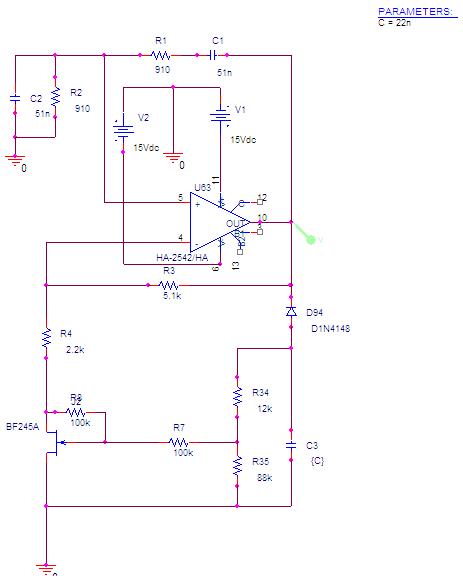johnymo
Newbie level 1
sinus generator
Hi, I have got a problem with my sinus generator based ona a Wien schematic and amplifier,that should work between 1Hz and 20kHz, I've tried everything,
I need to get Total Haramonic Disortion <1% and this is my main problem:/
This is my schematic:

I am designing it in PSpice 9.2,
please help me as You can...
I have attached this project...
best regards
Thank You
Hi, I have got a problem with my sinus generator based ona a Wien schematic and amplifier,that should work between 1Hz and 20kHz, I've tried everything,
I need to get Total Haramonic Disortion <1% and this is my main problem:/
This is my schematic:

I am designing it in PSpice 9.2,
please help me as You can...
I have attached this project...
best regards
Thank You